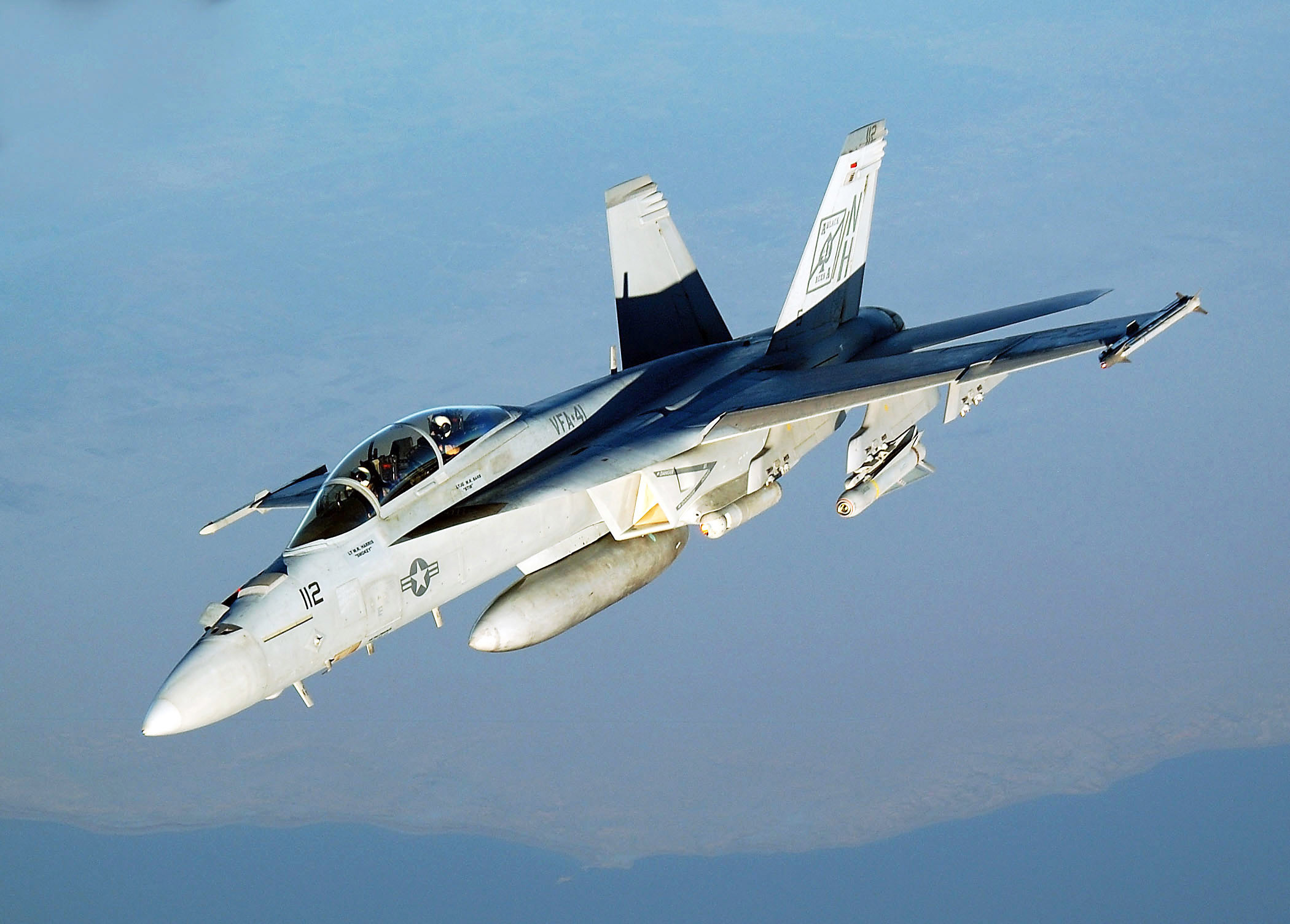News that the Liberal government is on the verge of acquiring 18 Boeing Super Hornet jets to replace its aging CF-18 fighter fleet comes almost exactly five years after a Tyee published an article advising Stephen Harper’s Conservative government to do just that.
UBC international law professor Michael Byers and researcher Stewart Webb laid out the case against the Harper government’s determination to spend tens of billions of dollars on a new generation of high-tech fighter, the U.S.-built F-35. Those planes were not only vastly behind schedule and over budget, Byers and Webb argued, they were a poor fit for the kinds of missions the Canadian air force were likely to fly.
Here are some snippets:
“Lockheed Martin, the maker of the F-35, has repeatedly failed to meet its delivery and budget targets. According to the US Government Accountability Office, test planes are achieving only two to eight flights per month, far short of the goal of 12 monthly flights.
“At the current rate, Canada will not receive its full complement of F-35s until years after the CF-18s are retired. Just as worrisome is the fact that the first F-35s delivered to Canada will lack the technology necessary to communicate in the Arctic and to track troops on the ground — with the latter function being essential to preventing casualties from ‘friendly fire.’”
The Harper government first said buying 65 F-35s would cost Canada $14.7 billion, but the auditor general found that figure to be fudged and an independent audit put the price tag at $44 billion over the lifetimes of the planes.
What would make better sense for equipping Canada’s air force? Byers and Webb zoomed in on the Super Hornet:
“Fortunately for Canada, other, already proven aircraft could fulfill our needs even better than the F-35, and at a much lower price.
“For example, Boeing's F/A-18E Super Hornets already fly for the U.S. and Australia, and cost just $55 million each. As the latest version of the CF-18 series, they also offer greatly reduced training costs to Canada.
“The twin-engine Super Hornets are more suited for the Arctic than the single-engine F-35s. Canada chose the two-engine CF-18s in the 1980s because of concerns that a single-engine would put pilots and planes at risk in remote locations.”
The downsides of ‘stealth’
Byers and Webb went on to question whether the vaunted radar-averting “stealth” design of the F-35 was something Canada really needed to make a priority.
“Although F-35s have stealth technology, the deployment history of Canada's CF-18s calls into question our need for covert planes.
“The CF-18s have only occasionally served overseas: a small number were based in Germany until 1990; 24 served in the 1991 Gulf War; 18 were involved in Kosovo in 1999; and seven were sent to Libya earlier this year.
“In the three latter ‘hot conflicts,’ Canadian aircraft were sent into action only after our allies had destroyed the enemy’s air defences. In Libya, this initial phase was conducted using British and American cruise missiles as well as American B-2 bombers — and not the five year-old F-22 stealth fighters that the U.S. possesses but did not even deploy.
“Stealth technology would actually be a negative for Canada, since it entails compromises with respect to other capabilities.
“For stealth purposes, the F-35 fuselage is wider than other fighter jets, which increases drag and reduces both speed and range. The fuselage is also plated with radar-absorbing materials, which add weight and further limit speed and range.
“Lockheed Martin admits that the F-35 will have a top speed of only Mach 1.6; Super Hornets and CF-18s, in comparison, both top out at Mach 1.8.
“Stealth necessitates that missiles and bombs are stored internally, thereby limiting the munitions carrying capacity of the F-35.
“It also necessitates internal fuel tanks. Unless non-stealthy external fuel tanks are added, F-35s can fly only 2,220 kilometres without refuelling. CF-18s have a range of 3,700 kilometres.
“Finally, stealth technology is maintenance intensive and results in a much lower ‘mission capable rate.’”
Time to bail
Not clear from today’s reports is whether the Trudeau government would buy the Super Hornets and seek to pull the plug on purchasing F-35s, or merely use the Super Hornets until the F-35s became available.
Five years ago Byers, an advisor at the time to the federal NDP, and his co-writer Webb noted the escape window was open and the government could bail out and “save billions”:
“Since 1997, Canada has contributed just $168 million towards F-35 research and development, and not as a down payment against future purchases. As a result, we could pull out of the F-35 program, having paid less than the cost of acquiring and maintaining a single plane.”
A report in August of this year put the cost to Canada of pulling out of the F-35s deal at $313 million, a small fraction of the bloated billions the F-35s are projected to cost Canada.
Read the entire prescient Tyee piece by Byers and Webb here. ![]()
Read more: Politics, Federal Politics
















Tyee Commenting Guidelines
Comments that violate guidelines risk being deleted, and violations may result in a temporary or permanent user ban. Maintain the spirit of good conversation to stay in the discussion.
*Please note The Tyee is not a forum for spreading misinformation about COVID-19, denying its existence or minimizing its risk to public health.
Do:
Do not: